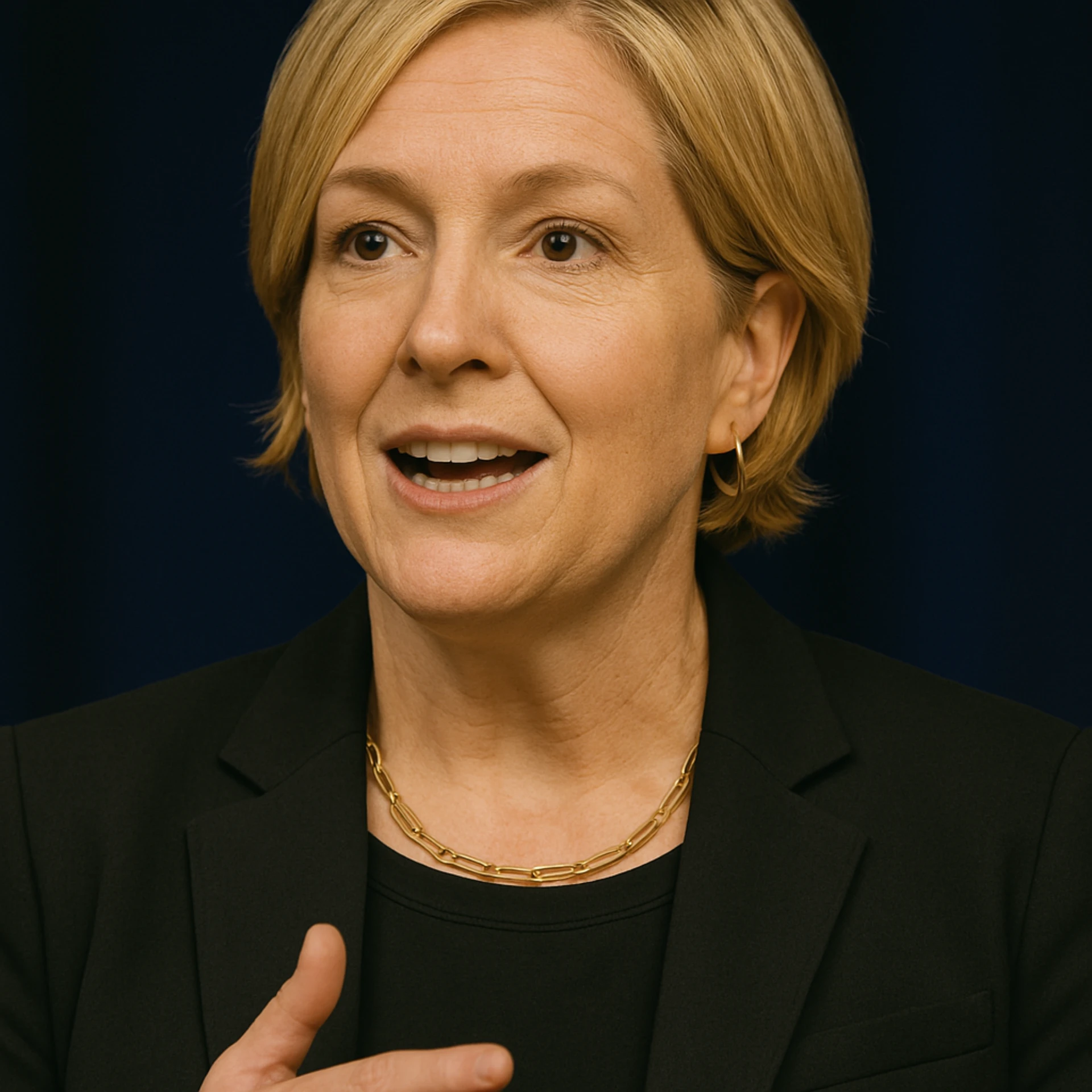I. Introduction
In the fast-paced world of human interactions, whether personal or professional, one fundamental question underpins our relationships: “Am I safe with you?” This seemingly simple question guides the quality of our emotional connections, our productivity, and how we navigate conflict or collaboration. It is rooted in a central tenant of the polyvagal theory, which provides an understanding of how our nervous system influences our social behaviours, ability to build trust, and feelings of safety in relationships.
Dr Stephen Porges, the architect of polyvagal theory, demonstrates how the vagus nerve – a critical component of our autonomic nervous system (ANS) – directly shapes our sense of safety and capacity for connection. This understanding revolutionises the way we view interactions, offering critical insights into how individuals perceive and respond based on subtle cues of safety or threat.
The importance of safety in relationships extends beyond personal connections into organisations, where trust and communication influence collaboration, innovation, and success. This whitepaper unpacks the core principles of polyvagal theory and explores the concept of a “relationship radar” – the mechanism through which individuals assess their safety in social engagements. Crucially, actionable strategies for applying these principles to business contexts are provided, offering a roadmap to improving team trust, communication, and thriving workplace dynamics.
II. Understanding Polyvagal Theory
The Vagus Nerve: An Overview
At the heart of polyvagal theory is the vagus nerve, the tenth cranial nerve, which plays a pivotal role in the autonomic nervous system. Known as the “wandering nerve,” it connects the brainstem to multiple organs, including the heart, lungs, and digestive tract, regulating internal states to ensure survival. However, Porges’s research highlights its additional role in shaping our emotions, communication, and social behaviour.
The theory suggests that the vagus nerve operates along three hierarchically organised states in response to environmental cues:
- The Ventral Vagal State (Safety and Social Engagement):
- The ventral vagal circuit supports feelings of safety, connection, and calm. When this state prevails, individuals are attuned, compassionate, and capable of engaging socially.
- The Sympathetic State (Mobilisation for Fight or Flight):
- In response to perceived threats, the sympathetic system initiates the fight-or-flight reflex. This state increases energy and vigilance but reduces the capacity for rational social interaction.
- The Dorsal Vagal State (Shut Down or Freeze):
- When threats feel overwhelming, the dorsal vagal system triggers a freeze or shut-down state, often marked by feelings of dissociation or helplessness.
Neuroception – the unconscious ability to detect safety or danger – is crucial in determining which of these states prevails. Individuals interpret subtle social cues such as tone of voice, facial expressions, and body posture to assess whether an environment or interaction feels safe or threatening.
The Role of Safety in Social Engagement
Humans are inherently social beings. We thrive when we feel safe within our environments, which promotes bonding, problem-solving, and creating. Polyvagal theory underscores how the sensation of safety is not merely a subjective experience but a physiological condition.
Research (Porges, 2011) reveals that the ventral vagal complex calms the heart rate slows respiration, and facilitates greater openness to connection and empathy. Conversely, when neuroception detects threats – whether physical or emotional – our nervous system shifts into defensive states, constricting our capacity for nuanced communication and teamwork.
In relationships, establishing safety creates a foundation for vulnerability, trust, and authenticity. It is this principle that lays the groundwork for the concept of a “relationship radar.”
III. Relationship Radar
What is the “Relationship Radar”?
The concept of a “relationship radar” refers to the subconscious and physiological mechanism by which individuals continually evaluate whether they are safe in interpersonal interactions. This radar operates through a combination of neuroceptive processes and social learning, scanning for cues that indicate trustworthiness, empathy, or potential threat.
Key components of the relationship radar include:
- Nonverbal Communication: Facial expressions, body language, and vocal tone contribute significantly to perceived safety.
- Consistency and Predictability: Trust is built when behaviour aligns with expectations over time.
- Emotional Responsiveness: A person’s sensitivity to emotional signals promotes connection and reduces feelings of isolation.
The term also highlights the bidirectional nature of safety in relationships. Just as people evaluate the safety of their environment, they project their internal states onto others, influencing how they are perceived and subsequently treated.
How to Assess Safety in Interpersonal Relationships
Polyvagal-informed strategies can be used to assess and enhance safety in relationships. The following principles can guide the process:
- Tune Into Nonverbal Cues:
- Pay attention to facial expressions, eye contact, voice modulation, and postures. Warm, open, and relaxed cues signal safety.
- Manage Stress Responses:
- High-alert behaviours such as rapid speech, aggressive gestures, or avoidance can disrupt feelings of safety. Regulating stress through mindful practices enhances connectedness.
- Validate and Listen Actively:
- Using empathetic listening and affirming language can foster environments where individuals feel heard and understood.
- Encourage Consistent Interaction:
- Being approachable and predictable in behaviour over time reinforces trust and diminishes perceived threats.
IV. Practical Applications in Business
In today’s workplaces, the dynamics of trust, collaboration, and leadership are critical to organisational success. Polyvagal theory offers a scientific lens for understanding the nuances of team dynamics and implementing strategies that optimise workforce engagement and well-being.
Fostering Trust for High-Performing Teams
Trust is a fundamental currency in the workplace, enabling productive collaboration and resilience under pressure. By recognising the physiological underpinnings of trust, leaders can create environments that foster safety at both an individual and team level.
Strategies to Build Trust:
- Create Safe Spaces for Dialogue:
- Hold regular check-ins or feedback sessions where employees feel psychologically safe to share concerns without fear of retaliation.
- Cultivate Predictable Leadership:
- Consistency in behaviour and ethical decision-making enhances reliability and trust.
- Harness Emotional Intelligence:
- Leaders with strong emotional awareness can regulate their states while recognising and responding appropriately to the emotions of team members.
Enhancing Communication and Collaboration
Effective communication is at the core of business success; however, misaligned neuroception can create barriers that hinder collaboration and productivity. Stress, distractions, or interpersonal tension often lead to defensive states, which can amplify disengagement or conflict.
Strategies to Enhance Communication:
- Practice Co-Regulation: Leaders and colleagues can model calmness and regulate the emotional tone of interactions to stabilise group dynamics.
- Adopt Nonviolent Communication: Frameworks that prioritise empathy and clear expression of needs can reduce misunderstandings.
- Encourage Active Listening: Training teams in deep listening techniques strengthens interpersonal connections and improves problem-solving.
Practical Benefits of Applying Polyvagal Principles in Organisations
By incorporating polyvagal-informed methodologies into their corporate culture, businesses can reduce stress-related absences, enhance productivity, and foster innovation. Employees working in environments that prioritise safety are statistically more engaged and committed to organisational goals (Gallup, 2022).
V. Case Studies
Successful Application: Cohesion in Remote Teams
During the COVID-19 pandemic, a multinational IT consultancy implemented practices guided by polyvagal principles to foster connection among remote workers. Daily virtual “open office” sessions provided a safe and informal space for employees to interact, reducing feelings of isolation. These interventions promoted a ventral vagal state across the team, resulting in a reported 23% increase in morale and productivity.
Lessons Learned:
- Small, consistent practices can have a profound cumulative impact.
- Nonverbal cues, such as tone and facial engagement, are just as important in virtual communication as they are in person.
Learning from Failure: Mergers and Acquisitions
Conversely, a botched acquisition by a mid-sized manufacturing company in 2018 illustrates the cost of failing to establish a safe environment. Fear of redundancy led employees into sympathetic states, driven by anxiety and distrust. A lack of transparent and empathic communication further polarised teams, culminating in a 32% turnover rate within six months post-merger.
Lessons Learned:
- Abrupt change exacerbates threat states. Leaders must prioritise clear and empathetic communication during transitions.
- Failing to address emotional undercurrents in times of uncertainty erodes trust and retention.
VI. Conclusion
Safety is not merely a subjective feeling but a biological imperative essential to thriving relationships and workplaces. Polyvagal theory offers a transformative framework for understanding how individuals perceive and respond to signals of safety and threat, providing a scientific basis for enhancing social engagement.
By framing safety as a physiological condition influenced by environment and interaction, the concept of a relationship radar emerges as a critical tool for assessing the health of connections. Applying this insight to business contexts illuminates the mechanisms that drive trust, communication, and collaboration among colleagues.
Building on this knowledge, organisations are encouraged to adopt polyvagal-informed strategies to create safe and open environments. This extends beyond policy to include intentional practices that foster emotional attunement, consistency, and meaningful interaction.
Future research must extend these applications to cultural and virtual workplace contexts, refining our understanding of safety dynamics in an increasingly interconnected world. As leaders and professionals, asking the question, “Am I safe with you?” is both a challenge and an opportunity – a call to create environments where connection flourishes and thriving relationships are the norm.
References
- Gallup. (2022). State of the Global Workplace 2022 Report. Retrieved from Gallup Reports.
- Porges, S. W. (2011). The Polyvagal Theory: Neurophysiological Foundations of Emotions, Attachment, Communication, and Self-Regulation. W.W. Norton & Company.
- Siegel, D. J. (2012). The Developing Mind: How Relationships and the Brain Interact to Shape Who We Are. Guilford Press.
- van der Kolk, B. (2015). The Body Keeps the Score: Brain, Mind, and Body in the Healing of Trauma. Penguin Books.










